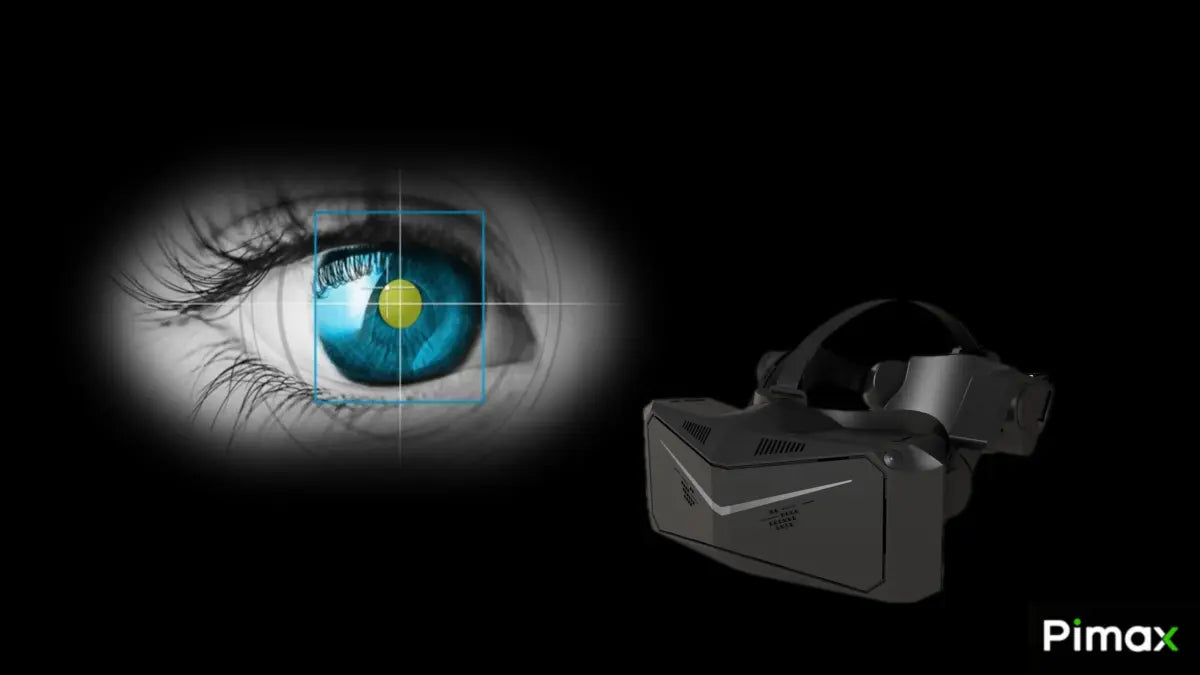What is Eye Tracking?
Eye tracking is a technique used to monitor and measure the movement of a person’s eyes as they view and interact with visual stimuli, such as objects in a physical or virtual world. The technology uses specialized hardware and software to capture the precise movements of the eyes and analyze the data in real-time. Eye tracking has been commonly used in fields such as psychology, neuroscience, and human-computer interaction to understand how people process and respond to visual information, thanks to its ability to provide insights into cognitive processes such as attention, perception, and decision-making. In recent years, this technology has become increasingly popular in the extended reality space to empower hardware devices and enhance users’ experiences.
How does eye tracking in VR work?
Among different approaches to eye tracking, Pupil Center Corneal Reflection (PCCR) is one of the most popular. In an XR headset, the eye tracking system usually consists of a ring-like structure that houses cameras and light sources positioned between the user’s eyes and the display. The system’s core machine learning algorithms analyze the camera feed and generate a continuous flow of real-time data points, including pupil size, gaze vector, and eye openness. This information can be utilized to assess a person’s ability to follow a stimulus, observe their reaction to a scene, and determine their intention, among other applications. This method is highly accurate and can provide precise measurements of eye movements, making it suitable for a wide range of applications.

Source: Tobii
Eye tracking in Pimax Crystal
A PCCR-based technology, Tobii eye tracking has been integrated into an array of VR headsets and widely used in enabling powerful devices, immersive experiences and actionable insights in both enterprise and consumer applications. Pimax Crystal has also integrated it to bring to consumers a more powerful headset and amazing gaming experience.
Automatic IPD Adjustment
Previously, it was difficult for VR players to manually adjust their IPD (Interpupillary Distance) and sharing a VR headset with friends or family was inconvenient as everyone has their own unique IPD measurement. However, with the help of eye tracking and an internal motor, Pimax Crystal can automatically adjust to the most suitable IPD (ranging from 58mm to 72mm) for each individual, providing the best possible VR experience.

Dizziness Reduction
Many VR devices nowadays are only capable of tracking the user’s head movements and not their eye movements, leading to motion sickness for some users. This happens because the human brain is highly sensitive to changes in the visual field that occur when the head rotates, particularly when the body remains stationary. Even a small delay in the relative rotation of the field of view can cause noticeable discomfort. Research has shown that this delay cannot exceed 20 ms before it becomes perceptible to the user. We use eye tracking in the Pimax Crystal VR headset to address this problem, hoping to allow changes in the visual field to be controlled by eye movements instead of head movements. This can reduce the likelihood of motion sickness and provide a more comfortable and immersive VR experience.

Eye-Tracked Foveated Rendering
Eye tracking technology optimizes VR devices by rendering visuals true to actual human vision. It allows for rendering the point-of-gaze area at high pixel density while rendering the peripheral region at a lower pixel density. This approach considerably reduces the GPU shading load and allows the savings to be used in critical areas like enabling complex shading, while maintaining high and steady frame/refresh rates. This can hugely benefit the user experiences in high-demanding content like gaming.

Gaze-based Interface and Interactions
VR devices integrated with eye tracking are revolutionizing the way people play games. For instance, shooting games can now be controlled using the eyes, with the cursor locking onto targets when gazed upon and the scope automatically adjusting when one eye is closed. Moreover, the game’s plot can change depending on where the player looks, such as automatic map navigation when the player stares at a crossroad or triggering different events when looking at different parts of the NPC. Gaze can also be used in menu navigation, with menus disappearing when not needed and triggered only by eye movement, creating a cleaner VR interface.

Summary
While Pimax Crystal may not be the first to integrate eye tracking, we are committed to bringing unparalleled visual clarity with advanced eye tracking capabilities to every VR player. Our goal is to provide a VR experience that is unlike anything seen before, and we appreciate your continued interest in our products. Stay tuned for our next blog post!








